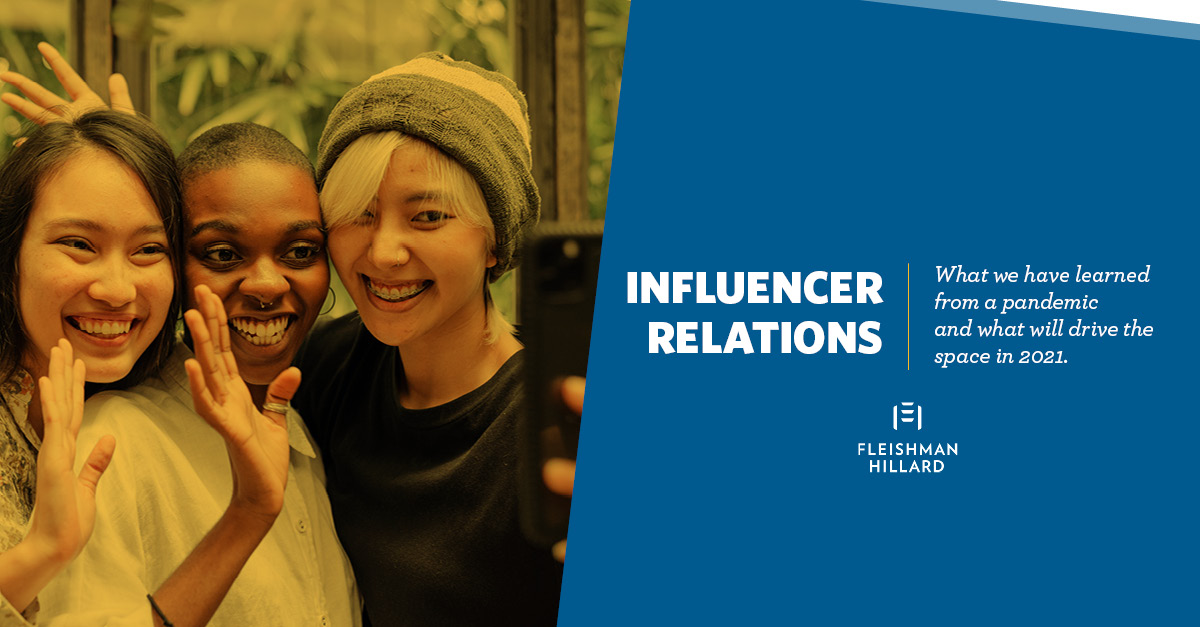2020 Brought New Influencer Trends That Will Impact 2021
While 2020 has been an unprecedented year in many ways, one constant in the midst of a lot of change was the power of influencers. In fact, influencer marketing helped sustain engagement with brands and products through the pandemic, and this year unveiled new influencer relations trends we believe will have application into the new year. How can organizations take advantage? Here are a few examples:
1. Engage influencers as creators and not just distribution channels.
Influencers today are not just creating content for their followers, but for use by brands on their owned and paid channels as well. Brands need to collaborate with influencers to create rich content and negotiate for usage rights of that content, creating resource efficiencies in asset development. By whitelisting influencer content, we target an influencer’s post to new audiences who look like the influencer’s current audience or the brand’s fan base. This makes an investment in influencer-created content work even harder.
2. Invest in influencer-produced video.
Consumers want more short-form video content from influencers across platforms, whether to be entertained, educated or inspired. Streaming-focused social media platforms enjoyed a major uptick this year. In addition, in lieu of in-person events and HQ tours for influencers, virtual and streaming events featuring and promoted by influencers have taken off. In 2021, brands will need to flex their creative muscle to keep these formats fresh and engaging, collaborating with influencers to do so.
3. Don’t discount the micro tier.
They have smaller reach figures but higher engagement rates than their macro-level counterparts. They are less expensive — and they are very trusted. Micro-influencers are of great value to brands with their ability to tap into very defined micro-communities. And, the comments on their sponsored or promotional posts tend to be more on-brand by percentage than that of macros. Brands prioritizing lower funnel KPIs will engage more micro-influencers next year.
4. Show diverse influencers your company’s commitment to diversity, equity and inclusion (DE&I).
In a time of increased awareness of social injustice and focus on DE&I, diverse influencers saw growth in follower counts and heightened demand, and they are commanding higher compensation. But before agreeing to a campaign, they will research the company’s DE&I efforts and evaluate how well they have walked the talk of diversity in past campaigns. To make their influencer casting more diverse, brands need to demonstrate an external commitment to diversity, equity and inclusion, and not just check a box.
Beyond the trends, our point of view remains steadfast: in a world where consumers are more wary and less trusting of corporations, brands, public figures and news media, influencers maintain valuable trust. But influencer relations success relies on engaging the right influencers for the right opportunity on the right platforms at the right time.
For more key influencer trends and our point of view, check out our paper, Influencer Relations: What we have learned from a pandemic and what will drive the space in 2021, for what’s now and what’s next.
